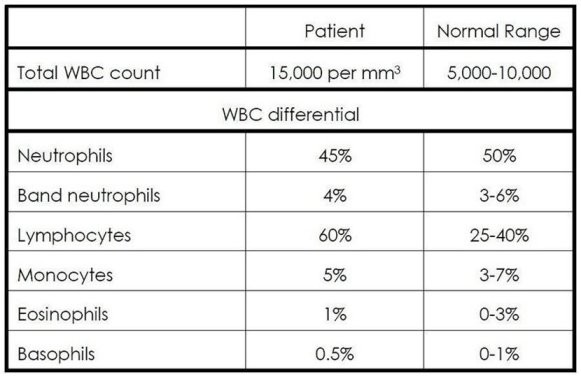 Examine the WBC count and differential data in Table 15.1. What type of disease is indicated by this set of data?
Examine the WBC count and differential data in Table 15.1. What type of disease is indicated by this set of data?
What will be an ideal response?
The overall elevation of WBC indicates an infection. The elevated lymphocyte proportion along with the slightly low neutrophil count is consistent with viral infections.
You might also like to view...
If an organism has four copies of each chromosome, then it is
A. aneuploidy. B. diploid. C. haploid. D. tetraploid. E. polyploidy.
An isopycnal water column is one in which the density ____ with depth
a. increases b. decreases c. remains the same d. None of the above.
Given what you know of the inheritance pattern of SCD, is the following pedigree representative of a typical SCD pedigree?
A) Yes; this is a pedigree showing dominant inheritance, and SCD exhibits dominant inheritance. B) Yes; this is a pedigree showing recessive inheritance, and SCD exhibits recessive inheritance. C) No; this is a pedigree showing dominant inheritance, and SCD exhibits recessive inheritance. D) No; this is a pedigree showing recessive inheritance, and SCD exhibits dominant inheritance. E) Another generation is needed before you can determine mode of inheritance.
Aerobic cellular respiration differs from anaerobic cellular respiration in that
A. anaerobic cellular respiration only takes place in plants. B. aerobic cellular respiration takes place in mitochondria. C. anaerobic cellular respiration produces more ATP. D. aerobic cellular respiration only uses glycolysis.